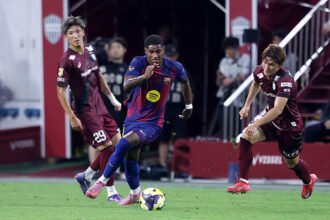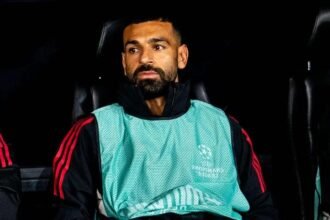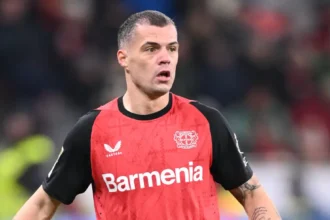Major League Soccer is quietly leading a revolution in sports science. From AI-driven motion tracking and blood analytics to injury prediction models, clubs like FC Cincinnati, Charlotte FC, and Atlanta United are redefining how footballers train, recover, and perform. As one performance director put it, MLS teams now operate with a real-time “feedback loop to the coaching staff” — bridging data, technology, and human insight to push the boundaries of performance.
Predicting Injuries Before They Happen
At FC Cincinnati, staff saw the warning signs before Matt Miazga pulled up injured — not with their eyes, but through data. The club’s internal performance systems, analyzing running mechanics in real time, detected abnormalities in his movement just minutes before he asked to be substituted.
That kind of predictive insight has become the new frontier of sports science in Major League Soccer. What began decades ago as basic heart-rate tracking has evolved into a complex network of AI models, motion sensors, and muscle-mapping technologies capable of predicting fatigue, workload imbalance, and even imminent injury.
As Adam Parr, Charlotte FC’s head of performance science, put it:
If you utilize sports science and performance, especially if you combine it with the technical and tactical aspects, it can be a real competitive advantage.
MLS Leading the Global Sports Science Race
While European leagues were slower to embrace such innovation, MLS has become a proving ground for experimentation. Clubs invest heavily in analytics infrastructure and technology integration, creating an ecosystem where sports scientists and coaches collaborate daily.
The top 25 to 33 percent of clubs in MLS are doing things at an elite level, on par with most global setups,
From isometric testing that maps muscular energy output to AI-assisted running diagnostics, MLS clubs now rely on data that updates in milliseconds — all to improve player availability and longevity.
Charlotte FC: Tech-First Injury Prevention
When Charlotte FC entered MLS in 2022, Parr was tasked with building their performance department from scratch. His mandate was clear: go all-in on technology. The result was one of the most advanced sports science facilities in North America.
The club uses isometric and motion-based testing to flag even micro-changes in a player’s running form — early warnings of potential muscular strain. That information feeds directly into custom training and rehabilitation plans.
We can analyze their running mechanics and spot any asymmetries that might indicate risk, Parr explained. If a player is returning from injury, we can compare that data to pre-injury benchmarks. It helps prevent recurring issues.
Atlanta United: From Australia to America
Dave Tenney, Atlanta United’s director of high performance, was one of MLS’s earliest adopters of advanced sports science. His journey began in 2012 when he traveled to Australia to study Aussie Rules Football, which had long embraced data-driven performance systems.
Returning to MLS, Tenney introduced GPS-tracking vests, a now-standard tool across global football. Initially, some players resisted — especially veterans unused to constant monitoring — but results spoke for themselves. His Seattle Sounders sides became fitter, more durable, and ultimately more successful.
Now with Atlanta, Tenney continues to push boundaries. The club’s new training center expansion includes a 50,000-square-foot facility featuring an altitude-simulation chamber, designed to refine conditioning and recovery.
FC Cincinnati: Data Meets Communication
At FC Cincinnati, Garrison Draper, VP of Sport Performance and Health, oversees a model built on communication. His office sits directly across from GM Chris Albright’s, symbolizing how integral performance data has become to club operations.
Every week we review data as a team, then I walk straight into Pat Noonan’s office to plan training,” Draper said. “It’s all about that feedback loop between science and coaching.
The club uses Orreco, a third-party analytics firm, to monitor blood biomarkers and stress responses in real time, helping tailor rest, recovery, and nutrition. Their dietician even uses data visualization to hold players accountable — from carb intake to hydration tracking.
Gamifying Fitness and Player Buy-In
Getting players to embrace all this technology isn’t always easy. That’s why clubs like Charlotte FC “gamify” performance testing, turning it into a form of competition. Players can track vertical leaps, speed metrics, and strength benchmarks via interactive dashboards that resemble video games.
It helps that it’s on an iPad,” Parr said. “Players get instant feedback — and it drives competition.
Even skeptics have come around. As MLS veteran Matt Freese (NYCFC) said:
I love looking at the data. It shapes strategy. It can’t replace coaching, but it can guide you in the right direction.
A Glimpse Into the Future
The next frontier for MLS sports science is already forming. Draper envisions a league-wide injury database that tracks every player’s medical history — from minor strains to MRI results — to improve transparency during transfers.
Meanwhile, experimental technologies like Lidar, a laser-based system used by defense agencies and autonomous cars, could soon be adapted for real-time athlete tracking.
Sometimes we have to invest in tech that might fail,” Draper admitted. “But when it works, it changes everything.
With innovations like AI injury prediction, altitude training chambers, and real-time physiological monitoring, MLS clubs are no longer just catching up with Europe’s elite — they’re setting new standards.
As Tenney summarized,
If you get the feedback loop right — between scientists, coaches, and players — you’re no longer guessing. You’re optimizing.










